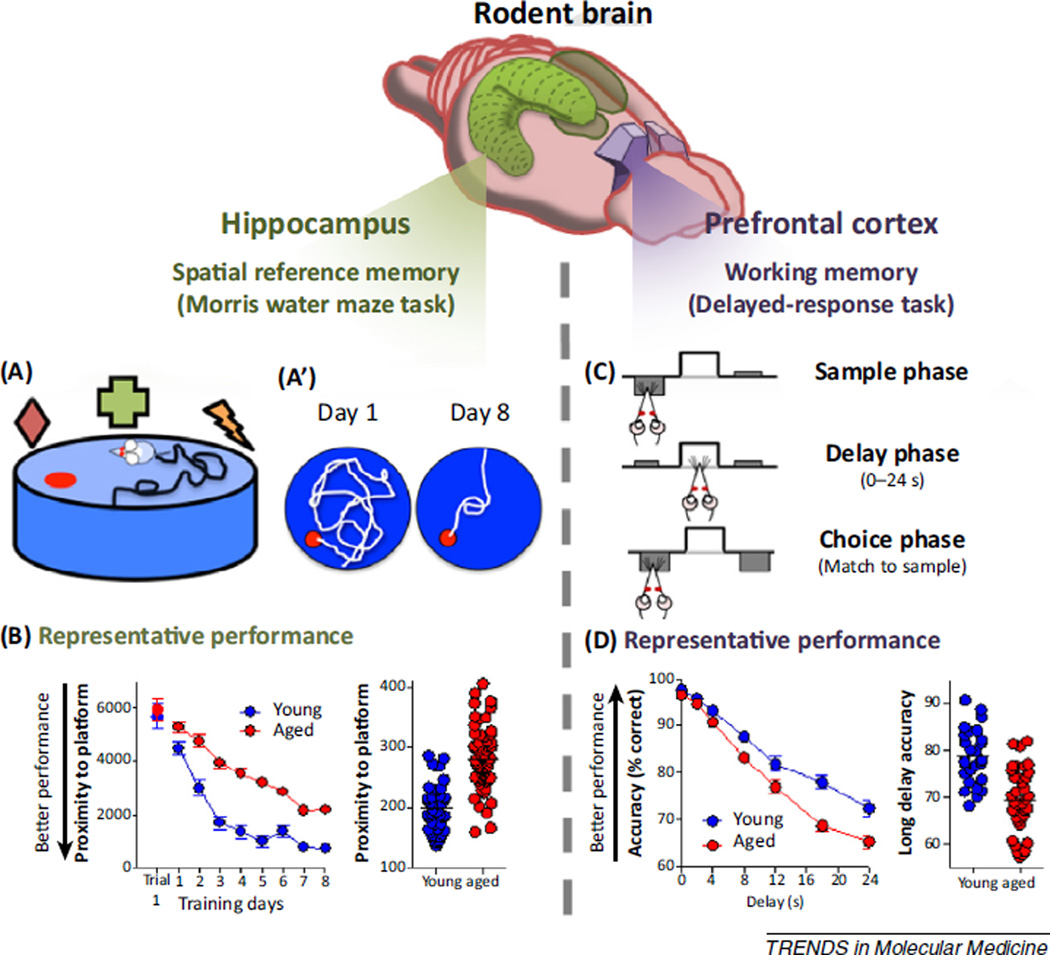Figure 1.
Using rodents to assess age-related decline of hippocampus- and prefrontal cortex (PFU)-dependent memory. (Above) The schematic shows the hippocampus (green) and prefrontal cortex (purple) in rodent brain, which serve distinct types of memory (spatial reference memory and working memory, respectively). (Below) (A) The functionality of the rat hippocampus can be evaluated in spatial learning tasks such as the Morris water maze. The schematic shows the water maze task apparatus in which rats use spatial cues (represented by colored shapes) to learn and remember the location of a stationary escape platform (red circle) hidden beneath the surface in a large tank of water. A’ shows representative swim paths from the first (day 1) and last (day 8) training days. After training, rats with intact hippocampal function take a more direct path to the platform. (B) Representative performance of young adult and aged rats across 8 days of training (three trials per day). While both young and aged rats find the platform more efficiently over time, aged rats are less accurate in their search, indicating attenuated hippocampus-dependent learning and memory function. Notably, deficits are not uniform among the aged rodent population (represented on vertical scatterplot). A subset of aged rats perform on a par with young rats, demonstrating a relative preservation of memory function. (C) The functionality of the rat prefrontal cortex can be evaluated using delayed-response tasks. This task assesses working memory, a flexible form of memory that maintains information for a brief duration (seconds) to help guide current and future action. The schematic shows a food-motivated, delayed-response task that contains three phases per trial. In the sample phase, rats are presented with one of two sample levers (left or right). Once the rat chooses the sample lever, a delay phase is initiated which ranges from 0 to 24 s. Following the delay interval, both levers are extended and the rat must remember and choose the lever presented in the sample phase to receive a food reward. The lever position in the sample phase is varied randomly across trials such that the rat must rely on trial-unique information to make the correct choice. Rats can perform many such trials in a single session (>100), and the mean accuracy of performance at different delay intervals provides an index of working memory function. (D) Both young and aged rats perform comparably and with a high degree of accuracy when the delay between the sample and choice phases is brief. At longer delay intervals aged rats are disproportionately and significantly impaired. There are individual differences in performance among aged rats, with some aged rats maintaining working memory function on a par with young rats and some demonstrating marked impairment. Data reproduced from [14,20,35].

